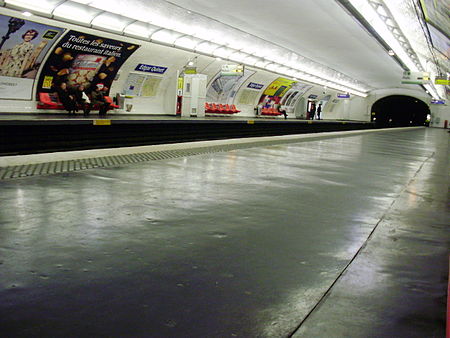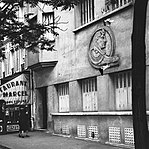Edgar Quinet (Paris Métro)
Paris Métro line 6Paris Métro stations in the 14th arrondissement of ParisRailway stations in France opened in 1906

Edgar Quinet (French pronunciation: [ɛdɡaʁ kinɛ]) is a station on Line 6 of the Paris Métro. Located at the intersection of Boulevard Edgar Quinet, the Rue du Montparnasse and Rue de la Gaîté, it is situated in the 14th arrondissement.
Excerpt from the Wikipedia article Edgar Quinet (Paris Métro) (License: CC BY-SA 3.0, Authors, Images).Edgar Quinet (Paris Métro)
Allée Georges Besse, Paris Paris (Paris)
Geographical coordinates (GPS) Address External links Nearby Places Show on map
Geographical coordinates (GPS)
| Latitude | Longitude |
|---|---|
| N 48.841048 ° | E 2.325084 ° |
Address
Edgar Quinet
Allée Georges Besse
75014 Paris, Paris (Paris)
Ile-de-France, France
Open on Google Maps










